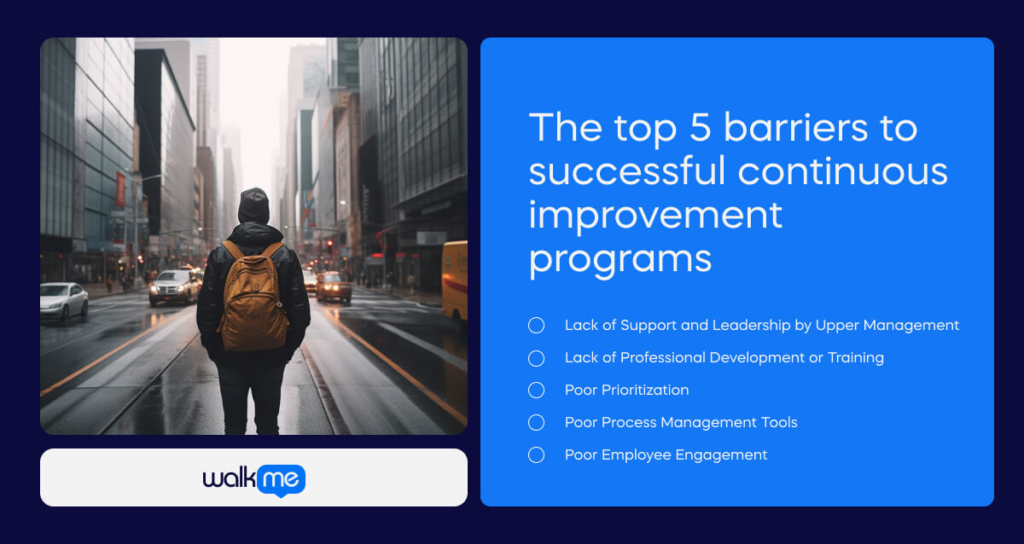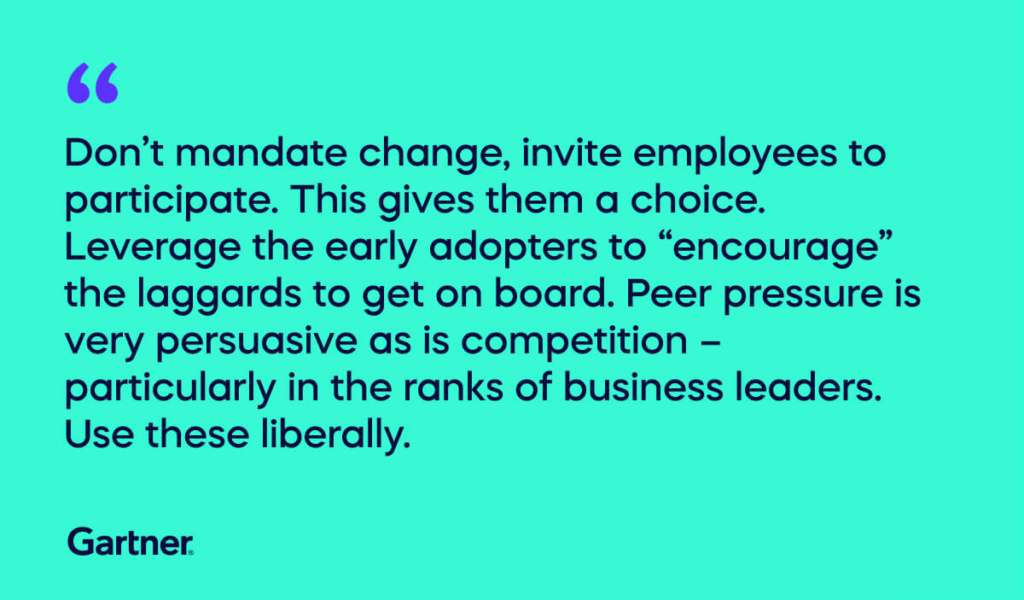It is said that both weight-loss plans and continuous improvement plans have very similar failure rates.
But why?
Both start off with excitement and commitment, mostly because initially both see great results. But then old habits set in, motivation is lost, the impact of the changes aren’t as obvious and the lasting impacts are never fully realized.
Continuous improvement is difficult to manage for a variety of reasons. There are common refrains, whether they are spoken out loud during meetings or subtle hints or cues from employees or teams. How about “we’ve tried that before and it didn’t work,” or “our organization is different. We don’t need that.” It is likely you have heard these at one time or another. The question is have you identified a reason why your programs are not working and have you thought about ways to circumnavigate these particular barriers?
Here are the top 5 barriers to successful continuous improvement programs

1. Lack of Support and Leadership by Upper Management
A recent study by Dr. Andreas Freund identified this is the most common reason why continuous improvement programs were not effective. In any top down organization the leadership must be strong and fully committed to a cohesive vision of change. They must be strong communicators and lead by example. If you are asking employees to learn new skill sets during a change, leaders of the organization should be the first to obtain new certification, or skills in order to build trust and confidence within the team.
2. Lack of Professional Development or Training
Training your employees for broader and better skill sets will serve them well in their careers. It will also help the future of the company as you communicate your desire to keep them involved in the long term. Often new certification programs are too specific and focus too much on small fixes or training programs and not enough on a broader HR enhancement. Employees become frustrated when their training opportunities are not connected to a long term educational strategy. So connect them with the right resources and the right vision for the future.
Gartner Analysts offer a solution that benefits old and new employees: “Put together mentoring programs, understand where skills may need augmenting and give them on the job training or classes. Let them fail and learn from their mistakes in lower risk scenarios.”
3. Poor Prioritization
There is never going to be a shortage of ideas for improvement at any organization. There are many ways to improve processes and initiatives. But when there is not a particular focus on what improvements are priorities, disagreements about strategies will occur. All changes should result in a re-commitment to your corporate strategy and vision. Remember to include your employees on prioritization processes, so that they feel connected to change and improvements.
4. Poor Process Management Tools
There are a variety of business process management software options for your business to choose from. Oftentimes before a large change, an IT department will spend extensively on a huge process management tool and after what is likely to be a large investment, they will force their employees to use it, despite it not being quite understandable to all. You need to find the right tool for your business or you will be weighed down by process management tools which are too complicated or too inadequate for serious use.
5. Poor Employee Engagement
One of the most important ways to fuel change effectively in your organization is to foster bottom-up improvement and commitment from your employees. If your organization is enforcing adoption of change upon your employees, with little room for communication from below, you are going to have difficulty. Micromanaging does not lead to successful change, and it certainly does not assist in the uptake or adoption of change by your employees. That is the way to get hostile or skeptical reactions to change opportunities, not the way to gain bottom up contributions, commitment and dedication. If you have not engaged your employees in your change processes, it is not too late, but you will have some work to do. Empower your employees to contribute to, and get involved with CI. Their ideas may be both refreshing and insightful to you as you work together to create a path to better uptake of CI.

Gartner Analysts suggest letting people get on board in their own way: “Don’t mandate change, invite employees to participate. This gives them a choice. Leverage the early adopters to “encourage” the laggards to get on board. Peer pressure is very persuasive as is competition – particularly in the ranks of business leaders. Use these liberally.”
Continuous improvement means constant evaluation, observation and commitment to efficiency, and flexibility. If your organization has not achieved your desired CI uptake, consider your priorities, engage your employees, focus on building strong leadership and find the right tools for the job.

